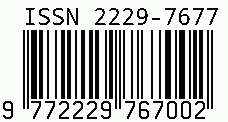
International Journal on Science and Technology
E-ISSN: 2229-7677
•
Impact Factor: 9.88
A Widely Indexed Open Access Peer Reviewed Multidisciplinary Bi-monthly Scholarly International Journal
Plagiarism is checked by the leading plagiarism checker
Call for Paper
Volume 16 Issue 3
July-September 2025
Indexing Partners



















Turning Invasive Biomass into Value: Biopolyol Synthesis from Prosopis juliflora Via Four Liquefaction Techniques
| Author(s) | Varshini Madhavadhas Padmalakshmi, Sankar Govindarjan |
|---|---|
| Country | India |
| Abstract | Global warming and depletion of non-renewable resources like fossil fuels, escalating the need for the development of environmentally acceptable and sustainable product by utilizing the naturally available renewable biomass. Prosopis juliflora (PJ), a highly ecological disruptive species was considered to a be a renewable biomass that was utilized in the production of biopolyol under four different liquefaction methods such as solvolytic, hydrothermal, phenol and microwave assisted liquefaction method. The wood and bark of Prosopis juliflora (biomass) were subjected to grinding, pretreatment and finally analysed using FTIR, TGA, DSC. After the liquefaction of both the biomass, the liquefied biopolyol was initially underwent solubility checking, identification of hydroxyl and acid number, measurement of initial pH value. Then to identify the functional group, structure, thermal properties of biopolyol, it was put through the characterisation like FTIR, NMR, TGA and DSC. This study highlights the importance of waste to resources approach by transforming an ecologically prevalent species into renewable chemical feedstocks, which supports green initiatives alongside industrial innovation. |
| Keywords | Prosopis juliflora (PJ), lignocellulosic biomass, liquefaction, biopolyol, solvolytic, hydrothermal, phenol, microwave assisted, FTIR, TGA and DSC |
| Field | Chemistry > Petroleum |
| Published In | Volume 16, Issue 2, April-June 2025 |
| Published On | 2025-06-22 |
| DOI | https://doi.org/10.71097/IJSAT.v16.i2.6468 |
| Short DOI | https://doi.org/g9q4cc |
Share this


CrossRef DOI is assigned to each research paper published in our journal.
IJSAT DOI prefix is
10.71097/IJSAT
Downloads
All research papers published on this website are licensed under Creative Commons Attribution-ShareAlike 4.0 International License, and all rights belong to their respective authors/researchers.

